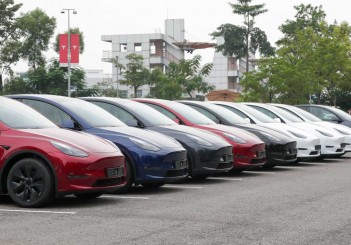They have also become a design statement in their own right and carmakers are working flat out to make these little suns more powerful so they can project light even further.
"When darkness falls there is a much greater risk of an accident happening", says technical expert Hans-Georg Marmit of Germany's Kues type approval organisation.
Traffic density drops at night by an average of 20 per cent and figures show that 40 per cent of all fatal road crashes take place during darkness.

Few areas of automotive technology have seen so much progress as lighting. High-tech has long ousted regular halogen lights which use a replaceable light bulb with a lifespan of some 1,000 hours.
First came the high beam assistants which recognize oncoming vehicles and automatically switch the headlights from high beam to low beam. These are usually activated by a camera which scans the road ahead.
Xenon lights were the next innovation. Officially known as high-intensity discharge headlamps (HIDs), they work a little like the neon tube bulbs common in office buildings.
BMW started using xenon in the early 1990s but the Bavarian premium maker has now switched to tweaked laser headlamps which are ultra-compact. These also offer 1,000 times more light than LEDs. These create unwanted heat, posing a risk to connectivity cables.
The BMW i8 hybrid supercar is fitted with laser lamps along with the latest Audi A8 limousine - the beams on both cars illuminate up to 650 metres of the road in front of the car.
These pixel or matrix light systems, which contain lots of LED light sources, produce less glare and reduce dazzle to other drivers. They also shift focus on their own to adapt to different light conditions and do not need to be dimmed.
They have varying numbers of LEDS with hundreds of individual pixels. "This allows them to be adapted very precisely to suit the respective traffic and weather situation," said Opel spokesman Patrick Munsch. The latest Insignia saloon has 16 sets of LEDs per headlamp
State-of-the-art systems like these find their way into upmarket cars although these days LEDs are also fitted to affordable saloons and city runabouts like the Volkswagen Polo or Seat Ibiza.
Tech teams are battling to make headlamps even better, although engineers admit that maximum luminous range has been achieved with current systems. The next challenge is to achieve optimal dazzle-free illumination.
Designers are also keen to use car lights as signals to warn other drivers of tight bends and other potential dangers in their path.
Mercedes-Benz last year unveiled a new light generation called Digital Light which use three high-powered LEDs. Resolution is excellent, thanks to over one million tiny mirrors which magnify the light
The system highlights pedestrians at the roadside and can project a symbol of an upcoming construction zone into the driver's field of vision.
The downside for owners of older cars is that these new light systems cannot be easily retro-fitted. LED and Xenon upgrade kits need a lot of fettling to get them right and so far, there are no after-market laser kits available.










